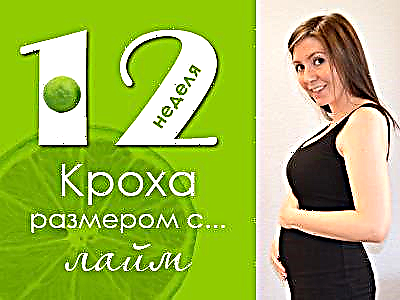
A large number of different types of paper are currently on the market. Not all of them are suitable for the work of an artist. Therefore, a correctly made choice largely determines the quality of the drawing and is the basis of creativity.
The choice should be based on what drawing tool the artist will use for his creative ideas.


Features:
When choosing paper for drawing, there are a few things to consider. Let's take a closer look.
- A very important feature is density of sheets. It is determined by the weight of 1 sheet with an area of 1 m². The low density does not allow working with an eraser or using watercolors, since the sheets are thin and friable, easily tear when erased and deformed when wet. Such external influences will hardly affect paper with good density.
- Texture or grain the sheet is determined by its smoothness. The texture can be pronounced or absent. With a high degree of graininess, the work will turn out to be voluminous and lively.
The smooth texture is great for technical sketching where clarity and precision of lines is essential.


- A feature such as working with an eraser is also very important. After all, there are species on which it is almost impossible to remove the trace from a pencil. However, it may tear or wrinkle. It is often difficult to work with an eraser on sheets of low density.
- White paper for drawing in some cases can be very important. For example, if in the future you need to scan your work, it is better if the sheets are of perfect whiteness. This way the resulting scanned document will be clear and eye-catching.


Kinds
The stores offer a huge selection of different types of paper products for a wide variety of purposes.
- Office paper... Snow-white sheets with low density and smooth texture. Under the influence of the eraser, they wrinkle and tear.
- For watercolor painting. The sheets are distinguished by good density and coarse-grained texture. The color is usually white or egg. It can be purchased both in albums and as separate sheets. Cotton is added to professional paper products of this type for better absorption of pigments and air.
- Pastel paper... This look has a wide range of colors, including neutral and bright tones. The surface is soft and pleasant to the touch. Found on sale in albums, glues or sets.
- Coated paper... It is rare. Has a glossy surface, on which it is convenient to perform graphic work. Suitable for ink or mascara.


- For sketching... It has a higher density compared to conventional office suites and is characterized by a smooth, even surface. Suitable for sketching and drawing with pencils and oil pastels.
- Craft wrapping paper... Dark yellow or brown packaging craft, as it is called in another way, is suitable for tools such as pencil, charcoal or pastel.


- Embossed paper... White or lightly tinted sheets, which may contain various patterns. With the help of them in the process of drawing, you can get a very interesting job. Suitable for pastels and charcoal.
- Rice paper... Most often used for Chinese painting. Very thin sheets, often rolled. Smooth on one side, rough on the other. Requires careful attitude in the drawing process.
- Handmade paper... All sheets are made by hand. It is made from plant materials, on which its quality depends.
Formats
The most popular are A2, A3, A4 and paper rolls. If standard formats have a fixed length and width of sheets, then choosing roll products, you can measure the sheet size you need yourself, which is very convenient.


Colors
The color scheme for each type of paper product can be different. There are species that only come in one color. For example, craft wrapping paper only comes in brown or dark yellow. And there are species with a wide range of colors. For example, you can purchase colored pastel paper. It can be either light neutral tones (blue, pink, pale yellow), and quite bright (blue, red, black and other various colors).
Previously, artists had to tint their drawing paper on their own. Now in stores there is a large selection of tinted sheets of various tones and shades.

How to choose?
The choice of paper for drawing should be based on what tools you will use. This will determine how thick paper you need. If you most often draw in one technique, then it is much more convenient and cheaper to buy folders of at least 40 liters. Professional paper should be of high quality. Often on the packaging you can see the insignia indicating this.


Before making a purchase, it is better to read reviews of the brand that you have chosen. They will help you not to make mistakes and take into account the advantages and disadvantages that customers have already encountered.
- For gouache. It is better to paint with gouache on sheets of high density. Their surface should be rough, then the gouache will have good adhesion and will lie smoother. Gouache can peel off a smooth sheet after drying. Drawing paper and cardboard are great options.
- For oil paints. Traditionally, for oil paints, artists use a canvas or board. But it is much more convenient to use special paper or thick cardboard for oil to create quick sketches. On sale you can find sheets for oil painting, which are very similar in quality and texture to linen canvas.
There are brands that produce this product for 100% cotton oil paints. They are also suitable for an easel.


- For acrylic. Acrylic is perfect for children's creativity. Almost all surfaces can be used for it. When choosing paper for acrylic paints, pay attention to its density. It should be high enough. Specialty sheets for acrylic is a rather expensive product.
- For a pencil. Artists who choose pencil as their main drawing tool should opt for sheets with a density of 90-110 g / m² that can withstand the test of an eraser. The lines should be well erased without leaving any marks. Sketch paper is one of the best options for pencil drawing.


- For chalk... Chalk drawing requires special chalk paper. It can be found on sale in the form of wallpaper for walls, special self-adhesive films that allow you to turn almost any surface into a chalk board.
- For coal. For charcoal drawings, paper with a rough surface is best to help hold the drawing on the sheet. You can use watercolor paper or pastel paper.


See below for how to choose drawing paper.



